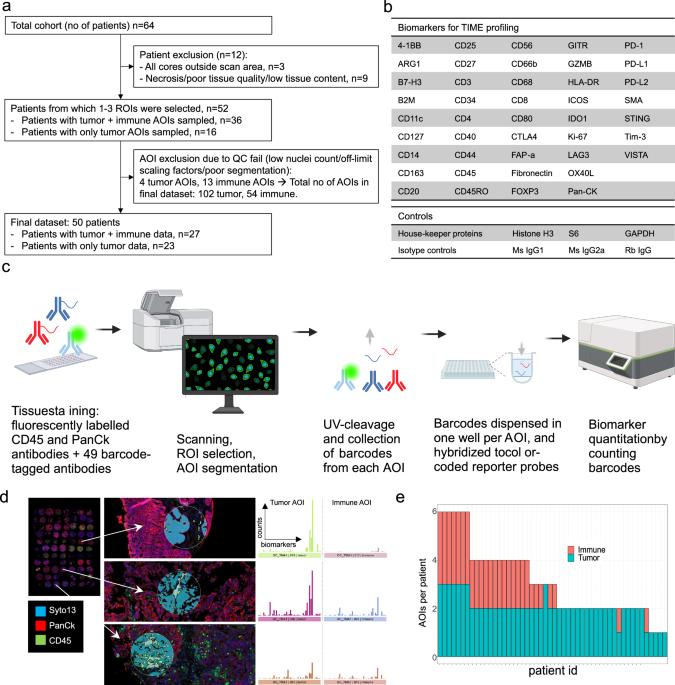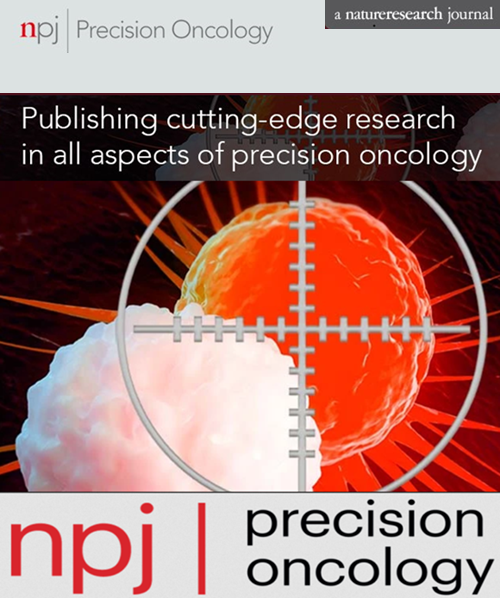卵巢癌的空间肿瘤免疫微环境表型。
IF 6.8
1区 医学
Q1 ONCOLOGY
引用次数: 0
摘要
免疫疗法在卵巢癌(OC)中大多以失败告终,这可能是由于肿瘤的巨大异质性和免疫反应的差异阻碍了临床试验的结果。肿瘤免疫微环境(TIME)特征分析有助于对卵巢癌肿瘤进行分层,以指导治疗选择。在这里,我们利用数字空间轮廓分析结合图像分析来描述OC中空间上不同的TIME表型区域,以评估免疫浸润模式是否能预测免疫肿瘤学靶点的存在。弥漫性免疫浸润和肿瘤-免疫空间相互作用增加的肿瘤中,IDO1、PD-L1、PD-1和Tim-3的含量较高,而局灶性免疫龛中CD163巨噬细胞较多,预后较差。免疫排斥与Tregs和纤维连接蛋白的存在有关。高分级浆液性卵巢癌的免疫反应总体较强,并存在多个可靶向的检查点。低级别浆液性 OC 与弥漫性浸润和 STING 的高表达有关,而子宫内膜样 OC 的 CTLA-4 表达较高。粘液性和透明细胞卵巢癌以局灶性免疫集群和免疫排斥区为主,粘液性肿瘤显示出富含T细胞的免疫龛。本文章由计算机程序翻译,如有差异,请以英文原文为准。

Spatial tumor immune microenvironment phenotypes in ovarian cancer
Immunotherapy has largely failed in ovarian carcinoma (OC), likely due to that the vast tumor heterogeneity and variation in immune response have hampered clinical trial outcomes. Tumor-immune microenvironment (TIME) profiling may aid in stratification of OC tumors for guiding treatment selection. Here, we used Digital Spatial Profiling combined with image analysis to characterize regions of spatially distinct TIME phenotypes in OC to assess whether immune infiltration pattern can predict presence of immuno-oncology targets. Tumors with diffuse immune infiltration and increased tumor-immune spatial interactions had higher presence of IDO1, PD-L1, PD-1 and Tim-3, while focal immune niches had more CD163 macrophages and a preliminary worse outcome. Immune exclusion was associated with presence of Tregs and Fibronectin. High-grade serous OC showed an overall stronger immune response and presence of multiple targetable checkpoints. Low-grade serous OC was associated with diffuse infiltration and a high expression of STING, while endometrioid OC had higher presence of CTLA-4. Mucinous and clear cell OC were dominated by focal immune clusters and immune-excluded regions, with mucinous tumors displaying T-cell rich immune niches.
求助全文
通过发布文献求助,成功后即可免费获取论文全文。
去求助
来源期刊

NPJ Precision Oncology
ONCOLOGY-
CiteScore
9.90
自引率
1.30%
发文量
87
审稿时长
18 weeks
期刊介绍:
Online-only and open access, npj Precision Oncology is an international, peer-reviewed journal dedicated to showcasing cutting-edge scientific research in all facets of precision oncology, spanning from fundamental science to translational applications and clinical medicine.
 求助内容:
求助内容: 应助结果提醒方式:
应助结果提醒方式:


